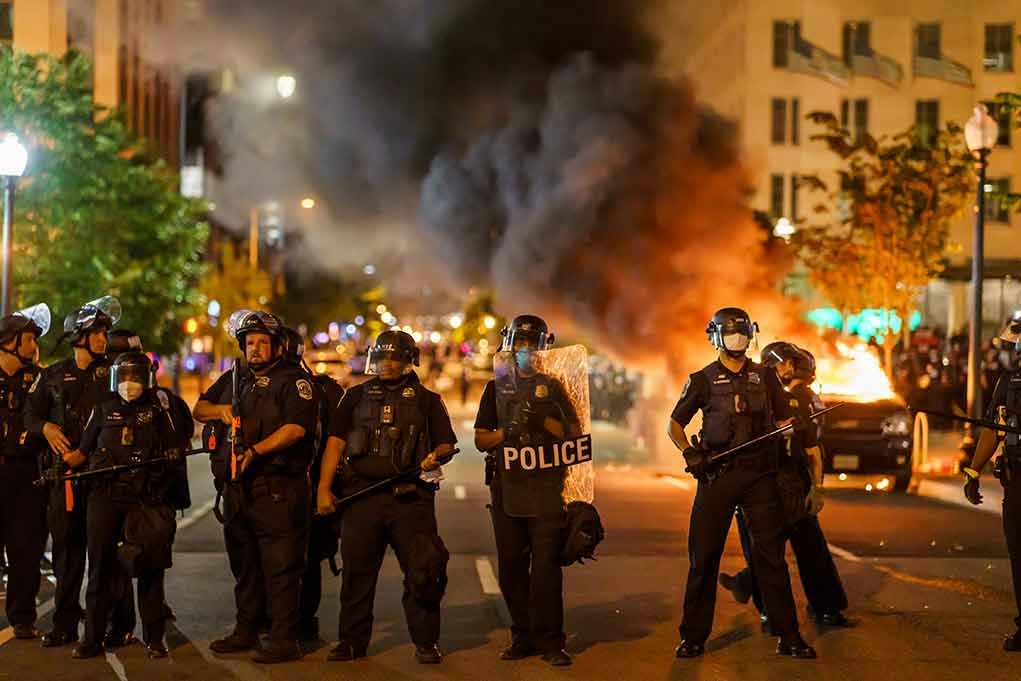
Generation Z has weaponized social media platforms and gaming networks to orchestrate simultaneous violent uprisings across multiple nations, fundamentally changing how political revolutions begin and spread in the digital age.
Story Snapshot
- Deadly riots erupted simultaneously in Morocco and Nepal during September 2025, organized by anonymous Gen Z collectives
- Over 22 people killed and hundreds injured across both countries as peaceful protests escalated into violent confrontations
- Decentralized organization through social media and gaming platforms made traditional government responses ineffective
- Youth-led movements used pop culture symbols and memes as protest iconography while demanding economic reform and digital freedoms
Digital Revolution Meets Street Violence
The September 2025 uprisings represented an entirely new form of political unrest. Anonymous groups like Morocco’s “GenZ 212” coordinated mass mobilization without traditional leadership structures. These digitally native organizers bypassed conventional protest planning, instead using gaming platforms and encrypted messaging to summon thousands of young demonstrators to the streets within hours.
🇲🇦 GEN Z PROTESTS ROCK MOROCCO, POLICE SWOOP IN WITH ARRESTS
Moroccan police detained dozens as Gen Z-led protests hit the streets in over 10 cities, demanding better healthcare and education instead of shiny new World Cup stadiums.
Chants of “Where are the hospitals?” rang out… pic.twitter.com/HTEWZHSPTB
— Mario Nawfal (@MarioNawfal) September 30, 2025
What distinguished these riots from historical youth movements was their simultaneous emergence across different continents. While Moroccan protesters demanded government accountability over spending priorities favoring international sporting events, Nepalese youth responded to sweeping social media bans they viewed as attacks on free expression. Both movements shared tactical approaches and symbolic language, suggesting coordination beyond coincidence.
When Peaceful Protest Turns Deadly
The transformation from demonstration to deadly riot occurred with shocking speed in both countries. In Morocco, protests beginning September 27th escalated within 48 hours to widespread arson and violent clashes with the Royal Gendarmerie. Over 400 protesters faced arrest as three died and hundreds sustained injuries. Property damage stretched across multiple cities as youth anger boiled over into destructive rage.
Nepal experienced even deadlier consequences during its earlier September uprising. The government’s September 4th ban on 26 social media platforms triggered immediate youth mobilization. By September 8th, violent confrontations with the Armed Police Force had begun claiming lives. The final toll reached 19 dead and hundreds wounded before government resignations on September 13th finally calmed the streets.
The Anonymous Army Strategy
Traditional governments found themselves fighting an enemy they couldn’t negotiate with or fully understand. The leaderless nature of these movements meant no clear authority figures existed for dialogue or compromise. When Morocco’s GenZ 212 expressed regret over violence and urged peaceful protest, the statement carried little weight because no central command structure could control individual participants.
This decentralized approach reflected broader Gen Z characteristics that political scientists are still analyzing. Unlike previous youth movements with charismatic leaders and formal organizations, these protesters operated through shared digital culture, memes, and viral messaging. Their spontaneous coordination capabilities exceeded what security forces had prepared to handle, resulting in delayed and often excessive government responses that further inflamed tensions.
Economic Grievances Fuel Digital Rage
Behind the technological innovation lay familiar sources of youth discontent. Morocco’s protesters targeted government spending priorities that favored high-profile international projects while neglecting healthcare and education. Years of underinvestment in public services had created widespread frustration among young people facing limited economic opportunities and reliance on family remittances from abroad.
Nepal’s situation reflected similar structural problems with chronic youth unemployment and perceived government corruption. The social media ban served as a catalyst rather than root cause, triggering accumulated anger over economic stagnation and political neglect. Both countries struggled with large, digitally connected youth populations whose expectations exceeded what traditional political systems could deliver.
Aftermath and Unresolved Tensions
While immediate violence has subsided in both nations, the underlying conditions that sparked these uprisings remain largely unchanged. Nepal’s government lifted its social media ban and accepted leadership changes, but structural economic problems persist. Morocco continues judicial investigations while tensions simmer beneath surface calm, with fundamental grievances over spending priorities and public service quality unaddressed.
The implications extend beyond these specific countries. The demonstrated ability of Gen Z activists to coordinate transnational protest movements through digital platforms represents a new challenge for governments worldwide. Traditional riot control and negotiation strategies proved inadequate against decentralized, anonymous organizing that can mobilize thousands within hours while maintaining plausible deniability about violent escalation.
Sources:
The Rise and Spread of Gen Z Protests
Asia’s Gen Z rises up against entrenched political elites
Gen Z Protests Government Corruption












